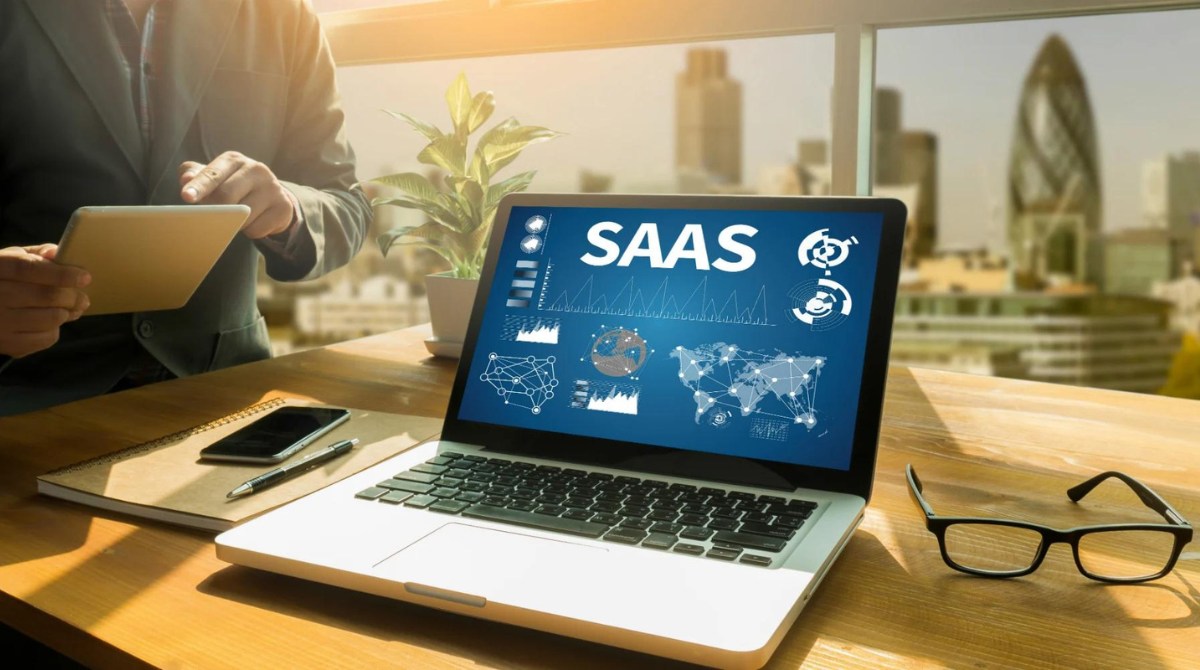Introduction
Building a Software-as-a-Service (SaaS) product can be an exciting venture that offers immense potential for growth and profitability. However, one of the crucial factors to consider before embarking on this journey is the cost involved. Understanding the cost of building a SaaS product is essential for effective planning and budgeting.
A SaaS product is a web-based software application that is hosted and maintained by a provider and accessed by users via the internet. It offers a range of benefits, including scalability, flexibility, and cost-efficiency, making it a popular choice for businesses of all sizes.
When it comes to estimating the cost of building a SaaS product, it is important to keep in mind that there is no one-size-fits-all answer. The cost can vary significantly depending on various factors such as the complexity of the product, the desired features and functionalities, the technology stack used, and the development team’s experience and location.
In this article, we will explore the important considerations and factors that contribute to the cost of building a SaaS product. By understanding these factors, you will gain insight into the various aspects that impact the overall cost and be better equipped to plan your budget effectively.
It is worth noting that estimating the cost of building a SaaS product is not an exact science. It is a dynamic process that requires careful evaluation and continuous assessment as the project progresses. However, by considering the different cost components discussed in this article, you can gain a realistic understanding of the investment required for your SaaS product’s development.
Let’s dive in and explore the key factors that contribute to the cost of building a SaaS product.
Understanding the Scope of a SaaS Product
Before delving into the cost analysis, it is vital to have a clear understanding of the scope of your SaaS product. The scope encompasses the features, functionalities, and overall purpose of the software. Defining the scope helps outline the development tasks, estimate the required resources, and determine the corresponding costs.
A comprehensive scope analysis involves identifying the target audience, understanding their needs and pain points, and aligning the product’s features and functionalities accordingly. Conducting market research and competitor analysis can provide valuable insights into what users expect from similar SaaS products. This analysis helps in refining the scope of your product and ensuring it caters to the market demands.
It is important to strike a balance between offering a robust set of features and keeping the development costs within budget. Prioritize the core functionalities that align with your target audience’s needs and add more advanced features as your product gains traction in the market.
Additionally, consider scalability and flexibility when defining the scope of your SaaS product. Anticipate the future growth and potential feature enhancements to avoid rebuilding or restructuring the software, which can be cost-intensive. Plan for scalability from the beginning so that your product can accommodate increasing user demands without major modifications.
Furthermore, the scope of a SaaS product also extends to the user interface and user experience (UI/UX). The UI/UX design plays a vital role in attracting and retaining users. A well-designed and intuitive interface enhances the overall user experience and improves customer satisfaction. However, it is important to strike a balance between visually appealing design and development costs. Investing in a professional UI/UX designer can ensure that your product stands out from the competition and provides an optimal user experience.
By thoroughly understanding the scope of your SaaS product, you can lay a strong foundation for cost estimation and development planning. It allows you to prioritize features, plan for scalability, and create a user-centric product that meets market demands. With a clear scope in place, you can now move on to analyzing the various cost considerations involved in building a SaaS product.
Cost Analysis and Considerations
When analyzing the cost of building a SaaS product, it is essential to consider several factors that contribute to the overall expenditure. By breaking down these costs and understanding the different components involved, you can effectively plan your budget and avoid any financial surprises along the way.
One of the primary cost considerations is the development team. The expertise and experience of the development team play a crucial role in the successful implementation of your SaaS product. Hiring an experienced and skilled team comes at a higher cost but ensures quality deliverables and a smoother development process. On the other hand, opting for a less experienced team might lead to cost savings initially, but it can result in delays, rework, and a subpar end product.
The complexity and scale of the desired features also impact the cost. More complex functionalities require additional development efforts and may involve integrating with external APIs or third-party services. It is important to clearly define the scope of each feature and prioritize them based on business requirements and user expectations.
Another critical consideration is the technology stack selection. The technology stack comprises the programming languages, frameworks, libraries, and infrastructure used to build the SaaS product. The choice of technology stack can significantly impact the development timeline and cost. Opting for well-established and widely-used technologies can offer cost advantages as the development team can leverage existing resources and community support. Additionally, it ensures a smooth integration process with external services or potential future enhancements.
Design and user experience (UI/UX) costs should also be taken into account. An appealing and intuitive user interface is crucial for attracting and retaining users. Hiring a professional UI/UX designer ensures a visually appealing design and a seamless user experience. Additionally, consider involving users in the design process through prototypes and feedback sessions to minimize rework and ensure a user-centric product.
Infrastructure and hosting costs are another aspect to consider. Hosting a SaaS product typically involves choosing between different hosting options, such as shared hosting, virtual private servers (VPS), or cloud hosting. Each option comes with its own cost implications, scalability features, and maintenance requirements. Evaluate your product’s requirements and consider potential future growth when selecting an appropriate hosting solution.
Maintenance and updates costs should not be overlooked. Once your SaaS product is live, it requires ongoing maintenance, bug fixes, and feature updates. This ensures optimal performance, security, and user satisfaction. The cost of maintenance and updates can vary depending on the complexity and frequency of the required changes. Budgeting for regular maintenance is crucial to avoid any potential disruptions and prevent the accumulation of technical debt.
By carefully analyzing these considerations and cost components, you can gain a better understanding of the investment required to build and maintain your SaaS product. However, it is important to note that the costs outlined here are general considerations and will vary based on the specific requirements, complexity, and market conditions of your product.
Development Costs
Development costs are one of the key components when estimating the overall cost of building a SaaS product. These costs encompass the expenses associated with the actual coding and programming required to bring your product to life.
The development costs can vary depending on factors such as the complexity of the product, the desired features and functionalities, and the development team’s expertise and location.
When it comes to development costs, it is important to consider both the backend and frontend development. The backend development focuses on the server-side logic, database management, and APIs that power the functionality of the SaaS product. It involves tasks such as designing and implementing the data model, setting up server infrastructure, and developing the necessary APIs for data retrieval and manipulation.
The frontend development, on the other hand, deals with the user interface and the client-side functionality of the SaaS product. It includes tasks such as designing and implementing the user interface, developing interactive features, and ensuring seamless user experience across different devices and browsers.
The cost of development also depends on the size and composition of the development team. The team may include roles such as project managers, software architects, backend developers, frontend developers, testers, and quality assurance engineers. The experience and expertise of the team members can impact the cost, as more experienced professionals generally come with higher hourly rates.
Additionally, the location of the development team can also influence the development costs. Hiring a remote team from countries with a lower cost of living, such as India or Eastern European countries, can result in significant cost savings compared to hiring a local team in a higher-cost region. However, it is important to consider the communication and time zone differences that may arise when working with a remote team.
Lastly, it is worth noting that development costs are not fixed, and they can evolve throughout the project. As the development progresses, new requirements or changes may arise, potentially leading to additional development costs. It is crucial to maintain effective communication with the development team, actively engage in the development process, and plan for any potential scope changes or iterations that may impact the overall development costs.
By carefully considering the factors mentioned above, you can estimate the development costs of your SaaS product and ensure that you allocate an appropriate budget for this crucial stage of the project.
Technology Stack Selection and Costs
The selection of a technology stack is a critical decision when building a SaaS product as it determines the tools, programming languages, frameworks, and libraries used in the development process. The technology stack you choose can significantly impact the development timeline, the scalability of the product, and ultimately, the overall costs involved.
There are several factors to consider when selecting a technology stack for your SaaS product. These factors include the product’s requirements, scalability needs, security considerations, development team’s expertise, and the availability of resources and support within the chosen stack.
Choosing widely-used and well-established technologies can offer certain advantages. For instance, popular programming languages, such as JavaScript, Python, Ruby, or PHP, often have extensive resources, libraries, and frameworks available, making it easier to find skilled developers and accelerate the development process. Additionally, widely-used technologies often have a vibrant community that provides support, tutorials, and updates, reducing development time and costs.
However, it is important to strike a balance between popularity and suitability for your specific product requirements. Consider the features, scalability, and performance needs of your SaaS product, as well as the long-term business goals. It may be necessary to evaluate less mainstream technologies or niche frameworks that are better aligned with your product’s unique demands.
When selecting a technology stack, you should also consider the licensing costs associated with certain frameworks or libraries. While many open-source technologies are freely available, some frameworks may require purchasing a license for commercial use. Additionally, certain services or APIs may have usage fees or subscription charges. It is crucial to thoroughly research and understand the licensing and cost implications of each component within your technology stack.
In addition to licensing costs, it is important to consider the cost of developer tools and hosting platforms associated with the chosen technology stack. Some proprietary development tools or hosting services may require a subscription or usage fees. These costs should be factored into the overall budget to ensure a comprehensive estimation of the technology stack costs.
Moreover, the technology stack selection also affects the maintenance and scalability costs of your SaaS product. Some technology stacks offer built-in scalability features, such as cloud providers, which can handle increased server load and accommodate future growth without extensive modifications. Others may require additional infrastructure setup and maintenance to ensure scalability. Consider how easily the chosen stack can adapt to growing user demands and factor in any associated costs when estimating the overall budget.
By carefully evaluating the requirements, scalability needs, licensing costs, and maintenance implications, you can choose a suitable technology stack that aligns with your product vision and budget. Collaborating with experienced developers or consulting with a technical expert can also provide valuable insights and guidance in selecting the most cost-effective and efficient technology stack for your SaaS product.
Design and User Experience Costs
The design and user experience (UX) of a SaaS product play a crucial role in attracting and retaining users. Investing in a well-designed interface and a seamless user experience can set your product apart from competitors and contribute to its overall success. However, it is important to consider the costs associated with designing and enhancing the UX of your SaaS product.
Design costs typically include the expenses related to visual design, interaction design, and the creation of a user interface (UI) that aligns with your brand and enhances the user experience. Professional designers with expertise in UX/UI design can help translate your product’s functionalities into an intuitive and visually appealing interface.
When budgeting for the design costs, it is essential to consider the complexity and scope of your product. More complex features and interactions may require additional design efforts, potentially impacting the overall costs. Additionally, if your SaaS product caters to multiple platforms, such as web, mobile, and desktop, design costs may increase as different interface designs need to be created for each platform.
Collaborating with a UX/UI designer throughout the development process is beneficial. It allows for iterative design, user testing, and incorporating user feedback into the product’s design. This approach helps identify and address any usability issues and enhances the overall user experience, resulting in higher user satisfaction and increased product adoption.
Design costs can vary based on the designer’s expertise and location. Hiring an experienced designer may come at a higher hourly rate but can lead to a more polished and impactful design. Consider the designer’s portfolio and previous work to ensure their style and skillset align with your product vision.
In addition to design costs, it is important to allocate a budget for ongoing UX improvements and enhancements. User expectations and industry trends evolve over time, and continuous updates to the user experience can enhance engagement and maintain a competitive edge. By budgeting for regular UX reviews and improvements, you ensure that your SaaS product remains user-centric and meets the needs of your target audience.
Furthermore, involving users in the design process through prototypes and feedback sessions can help minimize rework and improve the usability of the product. While user testing may introduce additional costs, it ultimately saves time and resources by addressing usability issues early on and ensuring that the final product provides a seamless and satisfying user experience.
Remember that investing in design and user experience is not just about aesthetics but also about the practicality of your product. A well-designed interface and a user-friendly experience can improve user onboarding, reduce support requests, and ultimately drive user satisfaction and customer retention.
By considering the complexity of your product, collaborating with experienced designers, and budgeting for ongoing UX improvements, you can ensure that your SaaS product provides an intuitive and visually appealing experience to users, resulting in long-term success.
Backend Development Costs
The backend development of a SaaS product encompasses the server-side logic, database management, and APIs that enable the product’s functionality. Estimating the backend development costs is an important consideration when budgeting for your SaaS product.
The complexity and depth of your product’s backend functionality determines the backend development costs. Tasks involved in backend development typically include designing and implementing the database structure, setting up server infrastructure, developing APIs for data retrieval and manipulation, and implementing the business logic that drives the product.
The size and composition of your development team, as well as their expertise, can impact the backend development costs. Hiring experienced backend developers who are adept at handling complex backend requirements and optimizing database performance might come at a higher cost. However, their expertise can ensure a more efficient and reliable backend infrastructure for your SaaS product.
Additionally, the technology stack chosen for backend development can also influence the costs. Some technology stacks offer built-in backend development frameworks and libraries that can accelerate the development process. However, these technologies may have associated license costs or higher hourly rates for specialized developers. On the other hand, using open-source technologies can help reduce backend development costs, but may require additional effort for customization and integration.
Another consideration is the integration of third-party services or APIs into your product. These integrations can add value to your SaaS product by providing additional features or data sources but may also introduce additional costs. Some third-party services and APIs have usage fees or subscription costs that need to be factored into the backend development budget.
It is crucial to emphasize scalability and performance during backend development to ensure that your SaaS product can handle increasing user loads and data volumes. Implementing scalable solutions, such as distributed database systems or cloud-based infrastructure, may require additional development effort and cost. However, investing in the scalability of your backend infrastructure can save you from costly rework or system limitations in the future.
Regular testing and quality assurance (QA) during backend development is essential to identify and fix bugs, optimize performance, and ensure data security. Allocating a part of the budget for QA can minimize the risk of post-launch issues and provide a robust and reliable backend for your product.
Finally, ongoing maintenance and updates are required to keep the backend infrastructure up-to-date and secure. Regular updates, bug fixes, and security patches incur ongoing costs that should be factored into the backend development budget.
By considering the complexity of your product, the technology stack, backend infrastructure scalability, third-party integrations, and ongoing maintenance, you can accurately estimate the backend development costs. Collaborating with experienced backend developers or consulting with a technical expert can provide valuable guidance in estimating and budgeting for your backend development needs.
Frontend Development Costs
The frontend development of a SaaS product focuses on the user interface (UI) and client-side functionality that users interact with. Estimating the frontend development costs is crucial when planning the budget for your SaaS product.
Frontend development involves transforming the design and mockups into a functional and visually appealing UI. It includes tasks such as coding HTML, CSS, and JavaScript, as well as implementing responsive design to ensure optimal user experience across different devices and screen sizes.
The complexity and intricacy of your product’s frontend interface influence the frontend development costs. More advanced features and interactions, such as real-time updates, interactive elements, or complex data visualizations, may require additional development effort and cost. It is important to clearly define the scope of frontend development and prioritize features based on their impact and value to users.
The composition and expertise of your frontend development team play a significant role in the cost estimation. Experienced frontend developers with strong skills in HTML, CSS, and JavaScript may come at a higher hourly rate but can deliver high-quality and efficiently coded frontend components. It is important to find a balance between costs and expertise when assembling your frontend development team.
The technology stack chosen for frontend development can also impact the costs. Different frontend frameworks and libraries, such as React, Angular, or Vue.js, may require varying development approaches and have associated learning curves. Consider the learning requirements and potential development time implications when selecting the frontend technology stack.
Optimizing the frontend for performance is another consideration in estimating the frontend development costs. Improving loading times, optimizing code, and implementing efficient caching mechanisms may require additional development effort. However, investing in frontend performance can enhance user satisfaction and retention, especially in scenarios with limited network connectivity or on mobile devices with slower internet connections.
Testing and quality assurance (QA) during frontend development are also crucial to ensure the functionality and usability of the frontend components. Allocating a part of the budget for QA allows for identifying and fixing any bugs or inconsistencies in the user interface, improving the overall user experience, and avoiding potential issues after the product’s launch.
Finally, ongoing maintenance and updates of the frontend codebase are necessary to ensure the compatibility of your product with evolving web standards and technologies. Regular updates and bug fixes incur ongoing costs that need to be considered in the frontend development budget.
By considering the complexity of your product’s frontend, the technology stack, frontend performance optimizations, testing and QA, and ongoing maintenance, you can estimate the frontend development costs more accurately. Collaborating with experienced frontend developers or consulting with technical experts can provide valuable insights and help in effectively budgeting for your frontend development needs.
Third-Party Integrations and APIs
Integrating third-party services and APIs into your SaaS product can enhance its functionality and provide additional features for your users. Understanding the costs associated with third-party integrations is essential when estimating the overall budget for your product.
Third-party integrations involve incorporating external services, APIs, or libraries into your SaaS product to add specific functionalities. These can include payment gateways, social media integration, analytics tools, email services, and more. The availability and selection of third-party services may vary, and their costs can vary as well.
When considering third-party integrations, it is important to determine which services are essential for your product and align with your users’ needs and expectations. Identify the key functionalities that will provide the most value and prioritize the integrations accordingly. Each third-party service may have its own cost structure, including subscription plans, usage-based fees, or one-time setup fees.
Some popular third-party services have free tiers or trial periods, which can be beneficial for startups or businesses with limited budgets. However, as your user base and usage grow, you may need to transition to paid plans or higher tiers to ensure adequate resources and support from the third-party provider.
API integrations require additional development effort to connect and communicate with the external service. This involves understanding the API documentation, implementing the necessary code to authenticate and handle data exchange, and testing the integration to ensure seamless functionality within your SaaS product.
It is important to consider the ongoing costs associated with API integrations. Some APIs have usage-based pricing models, where you are billed based on the volume of API requests or the amount of data transferred. It is crucial to estimate the potential usage of the API and factor in these costs when planning your budget.
Additionally, you should consider the potential impact on the user experience when integrating third-party services. Ensure that the integration is seamless and does not create friction or confusion for your users. Test the integration thoroughly to identify and fix any issues or inconsistencies to deliver a smooth user experience.
Remember to account for ongoing maintenance and updates of the third-party integrations. As the third-party services evolve, they may introduce updates or changes to their APIs that require corresponding adjustments and updates on your end. Allocate resources and budget for proactive maintenance and regular checks to ensure compatibility and functionality with the integrated services.
By carefully evaluating the third-party services and APIs that align with your product’s needs, estimating their costs, and factoring in ongoing maintenance and updates, you can effectively budget for the integration of external services into your SaaS product.
Quality Assurance Costs
Quality assurance (QA) is a crucial aspect of building a reliable and high-performing SaaS product. It involves testing and ensuring that the software functions as intended, meets the specified requirements, and provides a seamless user experience. Understanding the costs associated with quality assurance is essential for effective budget planning.
QA costs include the allocation of resources, time, and expertise dedicated to testing the various aspects of your SaaS product. This can include functional testing, performance testing, security testing, compatibility testing, and user acceptance testing (UAT), among others.
The complexity and scale of your SaaS product influence the QA costs. More extensive functionalities and intricate workflows may require additional testing efforts. It is important to thoroughly define the scope of QA and identify the critical areas that require testing to ensure that the product performs as expected.
QA costs can vary based on the testing approach and methodologies employed. Manual testing, where testers manually execute test cases, can be time-consuming and labor-intensive but allows for more precise and detailed testing. On the other hand, automated testing, where test scripts and tools are used to automate test cases, can be more efficient and cost-effective in the long run but requires upfront investment in infrastructure and development of automated test suites.
It is essential to allocate sufficient time and resources for thorough testing at each stage of the development process. QA should be considered an integral part of the software development lifecycle, rather than a separate phase conducted at the end. By adopting an Agile approach and having dedicated QA resources involved throughout the development process, you can identify and address issues early on, reducing the overall cost of fixing defects and potential rework.
Collaboration between the development team and QA team is crucial for effective testing. Clear communication, well-documented test cases, and bug tracking systems enable efficient issue resolution and prevent the accumulation of technical debt. Allocating resources to ensure effective coordination between the development and QA teams should be factored into the QA budget.
Furthermore, it is important to consider the ongoing maintenance of the QA process. As your SaaS product evolves and new features are added or modifications are made, regression testing becomes necessary to ensure that existing functionalities are not impacted. Allocating resources and budget for regular regression testing and updates to the test suite is crucial for maintaining the product’s quality as it grows and evolves.
Lastly, it is worth mentioning that while QA costs are necessary for delivering a high-quality product, they can be seen as an investment in preventing potential issues and improving user satisfaction. The costs incurred during QA help identify and rectify bugs, optimize performance, and ensure a smooth user experience, ultimately contributing to the success and reputation of your SaaS product.
By considering the scope of testing, testing approaches, collaboration between development and QA teams, and ongoing maintenance, you can accurately estimate and allocate the necessary resources for quality assurance in your SaaS product development budget.
Hosting and Infrastructure Costs
Hosting and infrastructure are critical aspects of building and launching a SaaS product. Estimating the costs associated with hosting and infrastructure is essential for effective budget planning and ensuring a reliable and scalable product.
The hosting and infrastructure costs depend on several factors, including the size and complexity of your SaaS product, expected user load, required performance levels, scalability needs, and the technology stack chosen.
There are various hosting options available, including shared hosting, virtual private servers (VPS), dedicated servers, and cloud hosting. Each option has its own cost implications and provides different levels of control, performance, scalability, and security.
Shared hosting is usually the most cost-effective option, as it involves hosting your SaaS product on a server shared with other users. However, this model might have limitations in terms of performance and resources, particularly if your product experiences high traffic or requires specialized configurations.
VPS hosting offers a higher level of control and dedicated resources for your SaaS product. It provides better performance and scalability compared to shared hosting, but at a slightly higher cost.
Dedicated servers provide exclusive use of a physical server for your SaaS product, delivering maximum performance, control, and security. However, dedicated servers come at a higher cost due to the resources dedicated solely to your product.
Cloud hosting, such as using infrastructure-as-a-service (IaaS) providers like Amazon Web Services (AWS), Google Cloud, or Microsoft Azure, offers scalability and pay-as-you-go pricing models. With cloud hosting, you can scale your infrastructure according to the demands of your SaaS product while only paying for the resources you use. The cost of cloud hosting can vary depending on the usage and specific services utilized.
In addition to hosting costs, infrastructure costs include the expenses associated with the necessary hardware, software, and networking equipment. This infrastructure is crucial for ensuring the availability, security, and performance of your SaaS product. Considering the scalability and redundancy requirements are crucial, as your infrastructure should be able to handle increasing user loads and provide redundant systems to avoid single points of failure.
It is important to estimate the potential growth of your SaaS product and choose a hosting and infrastructure setup that can accommodate that growth. Consider the usage patterns, projected user numbers, and any future scalability needs. Being able to scale your infrastructure as needed is crucial to avoid any performance limitations or disruptions as your product gains popularity.
Furthermore, it is essential to allocate budget for ongoing maintenance and monitoring of your hosting and infrastructure. Regular security updates, system patching, and proactive monitoring can help identify and address any potential vulnerabilities or performance issues, ensuring a reliable and secure environment for your SaaS product.
Be sure to research and compare different hosting providers and infrastructure options to find the one that best suits your product’s requirements and budget. Consultation with technical experts or cloud architects can provide valuable guidance and help in estimating the hosting and infrastructure costs accurately.
By considering the hosting options, infrastructure requirements, scalability needs, ongoing maintenance, and projected growth of your SaaS product, you can estimate and allocate the necessary resources for hosting and infrastructure costs in your budget.
Maintenance and Updates Costs
Maintenance and updates are an ongoing part of managing a successful SaaS product. Estimating the costs associated with maintenance and updates is crucial for effective budget planning and ensuring the continued performance and security of your product.
Maintenance costs cover the activities required to keep your SaaS product running smoothly after its initial development and launch. This includes regular monitoring, bug fixes, security patches, and general upkeep to ensure optimal performance, stability, and user satisfaction.
Bug fixes are inevitable as users discover issues or encounter unexpected behavior while using your SaaS product. Allocating resources for addressing bug reports, investigating issues, and implementing fixes is essential for maintaining a high-quality product. The complexity and severity of the bugs, as well as the responsiveness of the development team, can impact the cost and turnaround time for bug fixes.
Security updates are critical to protect your SaaS product and its users from emerging threats and vulnerabilities. Regularly patching and updating the underlying software frameworks, libraries, and dependencies helps mitigate the risk of security breaches. It is important to allocate resources for monitoring security advisories, conducting vulnerability assessments, and implementing security updates promptly.
Functionality updates and enhancements involve adding new features, improving existing functionalities, and responding to user feedback. These updates help keep your product competitive and align with customer expectations. It is essential to allocate budget and resources for ongoing development efforts related to functionality updates, ensuring that your product remains relevant and valuable to its users.
Regular maintenance also includes technical tasks such as performance optimization and database management. Performance monitoring and optimization help identify and address any bottlenecks or issues that may affect the speed and responsiveness of your SaaS product. Database management involves routine tasks such as backups, data integrity checks, and optimizing database queries to ensure efficient data retrieval and storage.
Additionally, technical advancements and evolving user needs may necessitate periodic updates to the technology stack, frameworks, and third-party services used in your SaaS product. These updates ensure compatibility, security, and access to new features and improvements. Allocating resources for evaluating and implementing these updates is crucial to avoid technical debt and stay current with industry standards.
It is important to emphasize that maintenance and updates need to be regularly budgeted for over the lifespan of your SaaS product. Ongoing costs are not limited to the initial development phase, but extend throughout the product’s lifecycle to ensure its longevity and continuous improvement.
By considering the regular maintenance activities, bug fixes, security updates, functionality enhancements, technical upgrades, and ongoing monitoring required for your SaaS product, you can allocate appropriate resources and budget for the maintenance and updates costs. Continual investment in maintenance and updates helps ensure a reliable, secure, and up-to-date product that meets the expectations of your users.
Additional Costs to Consider
When estimating the cost of building a SaaS product, there are several additional factors and expenses to consider beyond the core development and maintenance costs. These additional costs play a significant role in the overall budgeting process and should be carefully evaluated to ensure a comprehensive financial plan.
1. Licensing and legal fees: Depending on your product’s requirements, you may need to use proprietary software, libraries, or media assets that require purchasing licenses. Additionally, you may require legal assistance to ensure compliance with data protection regulations, intellectual property rights, and other legal considerations.
2. Staff and team management: Beyond the development team, you may need to allocate resources for project managers, product owners, and other team members involved in managing the development process, coordinating tasks, and ensuring smooth communication within the team.
3. Training and professional development: Investing in training and professional development for your team can significantly benefit the project. By keeping your team’s skills up to date and investing in their growth, you ensure efficient development processes and maintain a high-quality output.
4. Marketing and customer acquisition: Building a great SaaS product is only the first step; acquiring and retaining customers is equally important. Allocating budget for marketing activities, including advertising, content creation, SEO, and lead generation strategies, is crucial for gaining visibility, attracting users, and growing your customer base.
5. Customer support and onboarding: Providing excellent customer support and onboarding experiences is vital for ensuring customer satisfaction and reducing churn. Allocating resources for customer support tools, training, and personnel will contribute to strong customer relationships and long-term success.
6. Analytics and data management: Understanding your product’s performance and user behavior is essential for making informed decisions. Incorporating analytics tools and investing in data management systems will enable you to gather valuable insights, track key metrics, and optimize your product based on user data.
7. Business expenses: Consider other general business expenses, such as office space rent, utilities, software subscriptions, and other operational costs. These expenses are not directly related to the development process but are necessary for running a successful SaaS business.
8. Contingency budget: It is wise to allocate a contingency budget to account for unforeseen expenses, unplanned scope changes, or other unexpected challenges that may arise during the development process.
By considering these additional costs, you can develop a more realistic and comprehensive budget for your SaaS product. Conducting thorough research, consulting with experts, and regularly reviewing and adjusting the budget as needed will help you stay financially prepared and minimize any potential budgetary constraints.
Conclusion
Estimating the cost of building a SaaS product requires careful analysis and consideration of various factors. From development and design costs to hosting and maintenance expenses, each component contributes to the overall budget required for bringing your product to market successfully.
Understanding the scope of your SaaS product is crucial for accurately estimating costs. Defining the features, functionalities, and user experience you aim to deliver helps set a solid foundation for cost analysis and ensures that you allocate resources effectively.
Development costs encompass the expenses associated with coding and programming, including backend and frontend development. Careful planning, selecting the right technology stack, and assembling a skilled development team are vital to stay within budget and achieve desired results.
Design and user experience costs play a critical role in user engagement and satisfaction. Allocating budget for professional UI/UX design and considering ongoing iterative improvements can enhance the visual appeal and usability of your SaaS product.
Integrating third-party services and APIs provides additional functionality to your product but comes with its own costs. Evaluating the benefits and weighing them against the associated expenses is crucial when considering third-party integrations.
Quality assurance costs ensure the reliability of your SaaS product by conducting thorough testing and identifying and fixing any issues. Budgeting for QA activities throughout the development process helps deliver a high-quality and bug-free product to end-users.
Hosting and infrastructure costs, along with ongoing maintenance and updates expenses, are necessary for the smooth operation and scalability of your SaaS product. Choosing the right hosting options, scaling infrastructure when needed, and planning for ongoing maintenance are essential considerations.
Lastly, other additional costs, such as licensing fees, marketing expenses, customer support, and business operational costs, should be factored into the budget to ensure a comprehensive financial plan.
By carefully analyzing each aspect of cost estimation and considering these factors, you can create a realistic and effective budget for building and maintaining your SaaS product. Regularly review the budget as the project progresses, keeping in mind that adjustments may be needed due to changing requirements or unforeseen challenges.
Remember, successful budget planning is not only about minimizing costs but also about investing wisely in the necessary resources to deliver a high-quality SaaS product that meets user expectations and drives growth in your business.

























